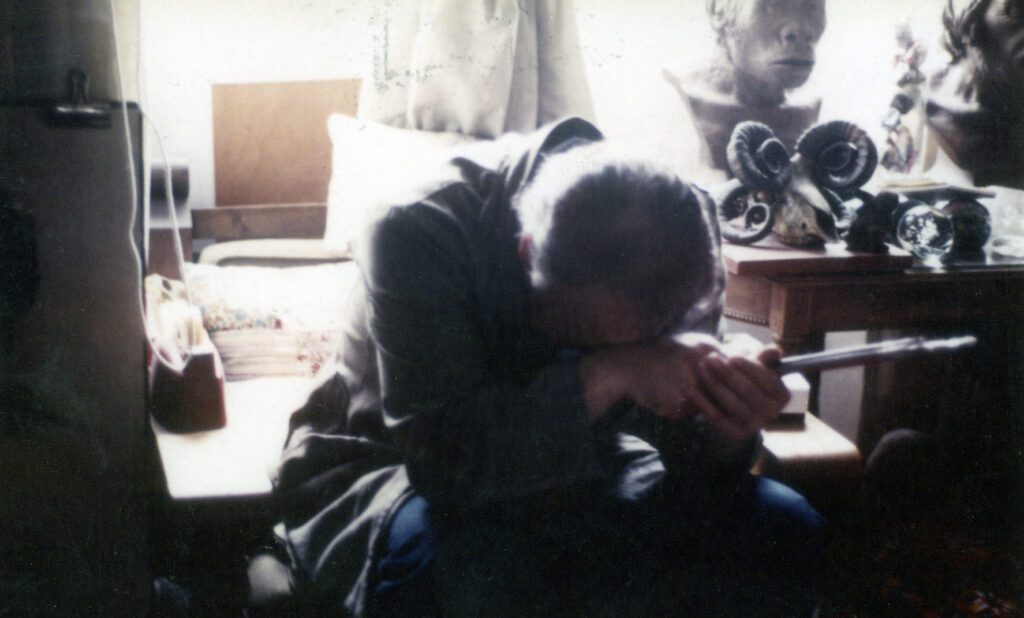Painter Jose Manuel Schmill, one of the most controversial and transcendent artists of the 20th century, an art revolutionary and an avant-gardist for his time, was born on April 21, 1934 in Mexico City, in a particularly complicated birth.
His mother Carmen Ordoñez Morali, after 24 hours of arduous labor, managed to bring him into the world weighing 3,700 kilograms.
His father, Jose Vidal Schmill Sida, an electrical mechanical engineer and nuclear mathematical physicist, moved them to the home of his mother Amanda Sida, to spend the convalescence and take care of the Schmill child, given the delicacy of childbirth, who from that early age grew up in the bosom of his grandmother the first two years of his life. She was a woman of strong and dominant character, however, she turned to the care and interest for her grandson Schmill, later causing a family problem since she wanted to stay permanently in charge of the child, which was not allowed by his mother Carmen Ordoñez and they moved to Calle Antonio Maceo in Colonia Escandon in Mexico City.
Jose Manuel Schmill was the firstborn of 4 siblings who shared his childhood and adolescence: Ulises Sergio, Amanda Maria and Carmen Josefina.
Schmill always hated school. He was taken to his first kindergarten at the age of 5, dragged in the middle of a tremendous tantrum to avoid attending, a story that was repeated every day.
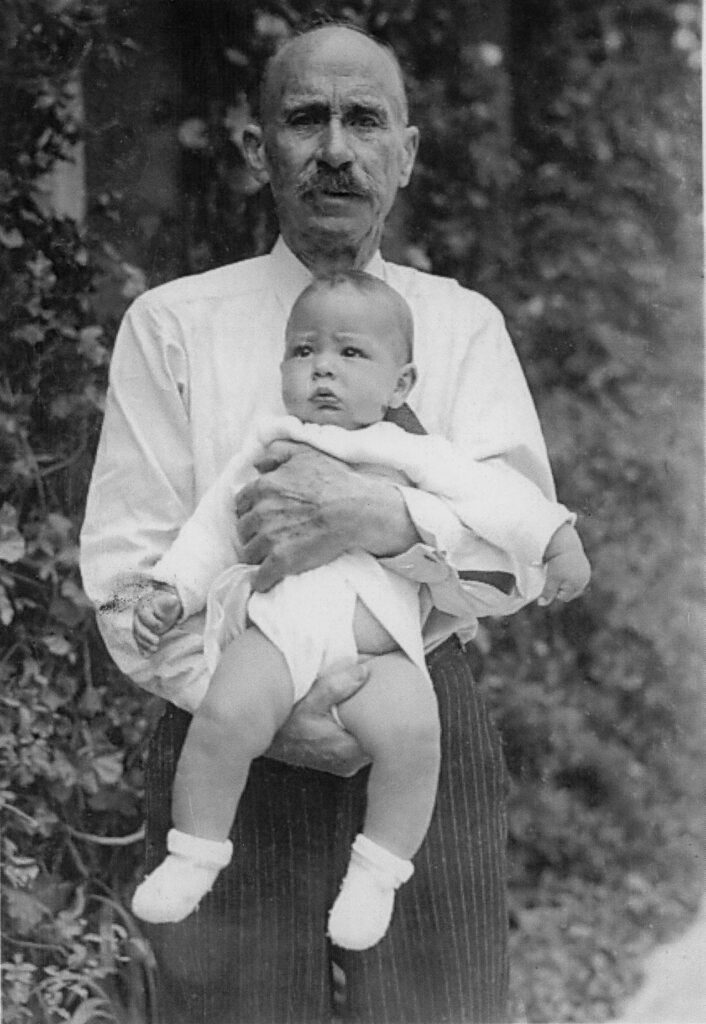
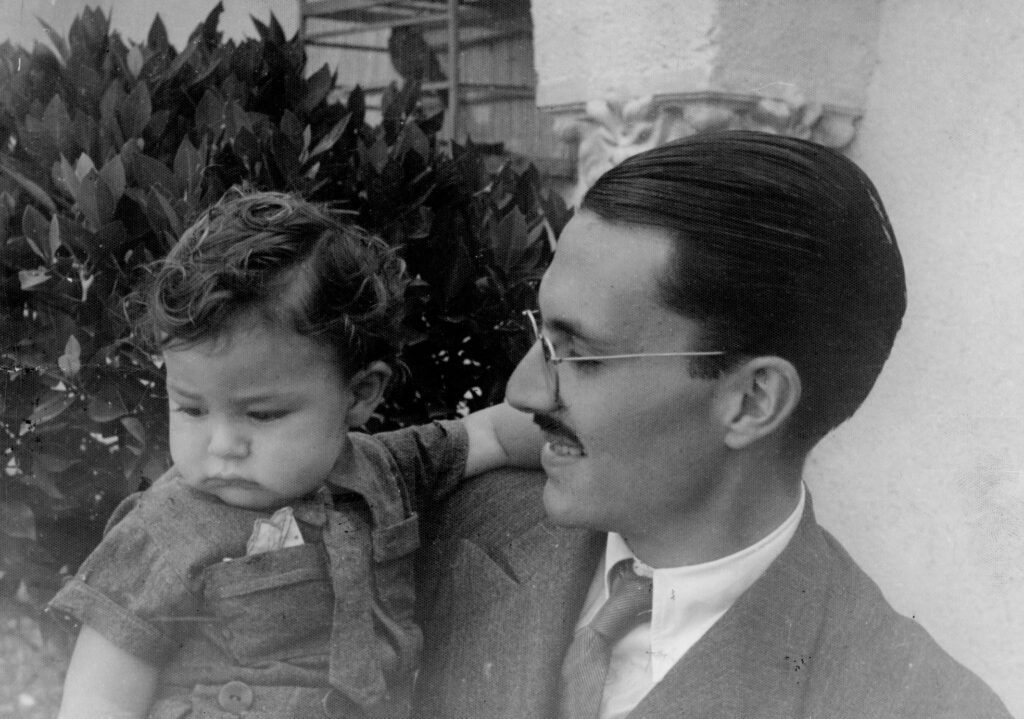
He studied elementary school at Instituto Mexico, where he failed 3 years, so at one point his brother Ulises caught up with him and they were both in the same grade. As he did not like school, he would sit as far back as he could in the classroom, so as not to pay attention and observe the lights and shades that came through the window and thus imagine what was happening outside. He felt an enormous attraction for the shapes, lights, sun rays and colors that he could admire, and began to draw them; the only way he had to relax wherever he was taken as a child was to ask for paper and a pencil to draw. He also had a great fondness and interest for animals and insects, looking for them for hours in the flower boxes of his house, a private house they moved to on Avenida Revolucion in Colonia Escandon, and where he spent most of his life visiting the house of his paternal grandmother Amanda Sida, who was called “Tita”, a strict and severe woman, but who showed total favoritism and a certain weakness for the whims and tastes of her grandson Jose Manuel.
There were roosters, hens, and dogs that little Jose Manuel loved. He spent long hours taking care of them, watching them very carefully. Later on, his tendencies to draw these animal and insect shapes would be seen in his works. His love for animals was so great that he even used to sleep inside the dogs’ house for hours at night, until his father would look for him and take him out of there by force.
Since he was a little boy, Schmill was a great movie lover. More than anything else, he loved the morning horror movies that were projected in the so-called “Matinees” where 3 movies were shown for 1 peso. Young Schmill went to the “Ermita” and “Revolucion” Cinemas every day to see the horror movies, which became his great favorites: at the age of 12, he was ecstatic with Dracula, Frankenstein, The Wolf Man, Jack the Ripper and everything that was Horror Films. He would find himself crouched alone in the movie theater, from where his father, late at night, would reluctantly pick him up to take him back home.
Due to Jose Manuel Schmill’s academic rebelliousness, school rules, misconduct and disobedience towards teachers, as a disciplinary measure, his father sent him to attend high school at the Latin American Military School as a reprisal, where Schmill also did not comply with the regulations or discipline requirements. His brother Ulises accompanied him to the same destination despite being an exemplary student, (quite the opposite of Jose Manuel) for his decision not to separate from his older brother.
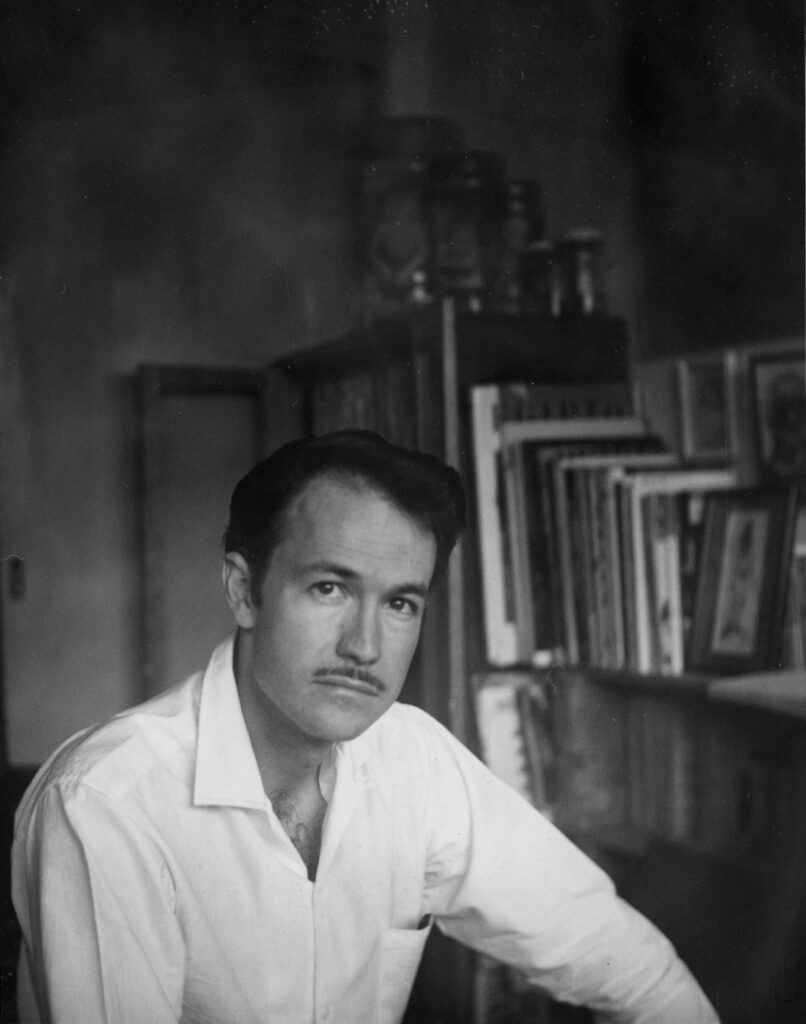
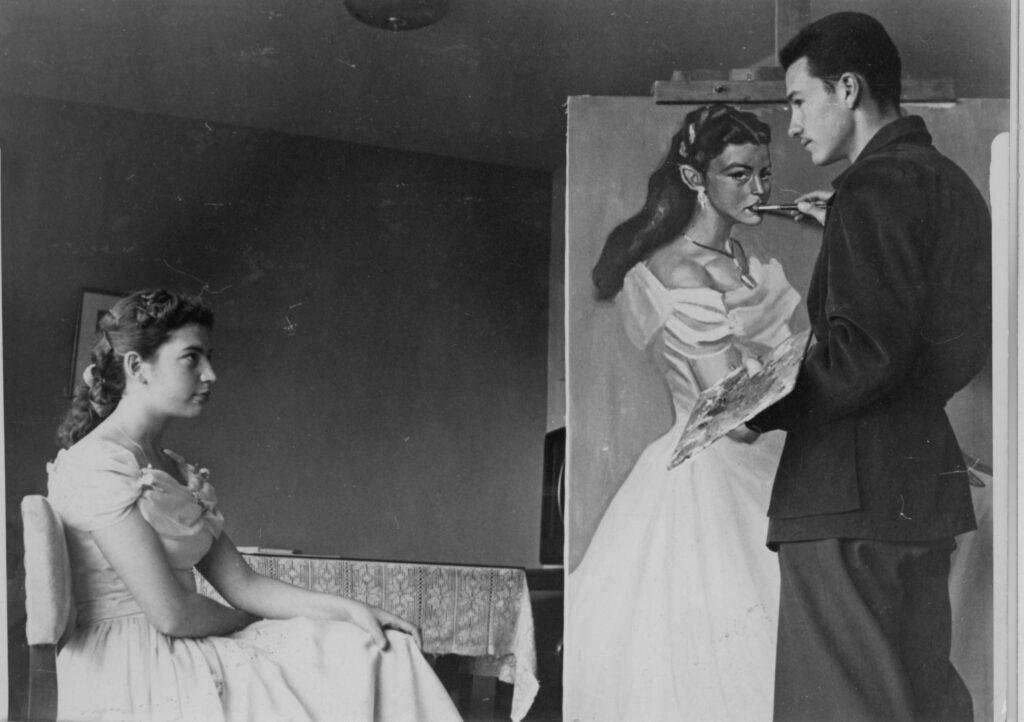
Once again Schmill rebels, has bad behavior and only spends his time drawing, on sheets, desks and wherever possible, bothering his classmates except for a few good friends who shared his rebelliousness. He escaped from that school by jumping over the very high fences that surrounded it, inviting his brother to do it too and taking him back with him, arriving home to ask to be taken out of there, until he imposed himself to his father and told him “I’M GOING TO PAINT, it’s the only thing I want and I’m interested in. Painting, reading as much as I can, listening to classical music, I don’t care if you want it or not, I’m going to paint and it’s my decision, I’ll be a painter and that’s it. If I have to take any classes, it will be painting and nothing else”.
His father agrees to support his true vocation, but comes to an agreement that he will continue studying until he finishes high school in exchange for paying for the painting classes that Schmill so desires, and after leaving the military school, he begins to take those classes. First with Jose Antonio Grana, who came to the house to give him drawing and anatomy classes of great precision, and it took the young Schmill very little time to master the classical techniques that Grana taught him. Then, he found out that the great Spanish painter Jose Bardasano Baos had a workshop for students to whom he taught classical painting techniques, so Schmill did not hesitate to go in search of him. The European classical technique that he acquired at this time with his Master Bardasano would be the one that would forever mark the rest of his artistic legacy.
In his eagerness to know the human anatomy first-hand, he began to go to the morgue, where he was allowed to observe autopsies, take photographs and little by little, to know in depth the parts of the body in different states, successfully bringing this knowledge to his canvases, achieving works of highly realistic elements and shocking compositions always based on truth.
In his mind there was only art, painting and the classical music that he listened to as a child at the home of his uncle Manuel Schmill Sida, his father’s brother, whom he visited very often and who had a great influence in instilling in him the love for classical music and with whom he spent sweet hours listening to his favorite musicians, Tchaikovsky, Shostakovich, Stravinsky and Beethoven, among many others he never stopped listening to.
Much of his melomania was due to the presence and closeness of his uncle, who was affectionately called “El Guero”, an extremely cultured man with a deep respect for animals. He had two large German Shepherd dogs that he loved, a man of convictions, a key player in the construction and founding of the synagogue on Calle Monterrey in the Roma neighborhood of Mexico City, which he attended due to the religion and the German Jewish origin of the Schmill family.
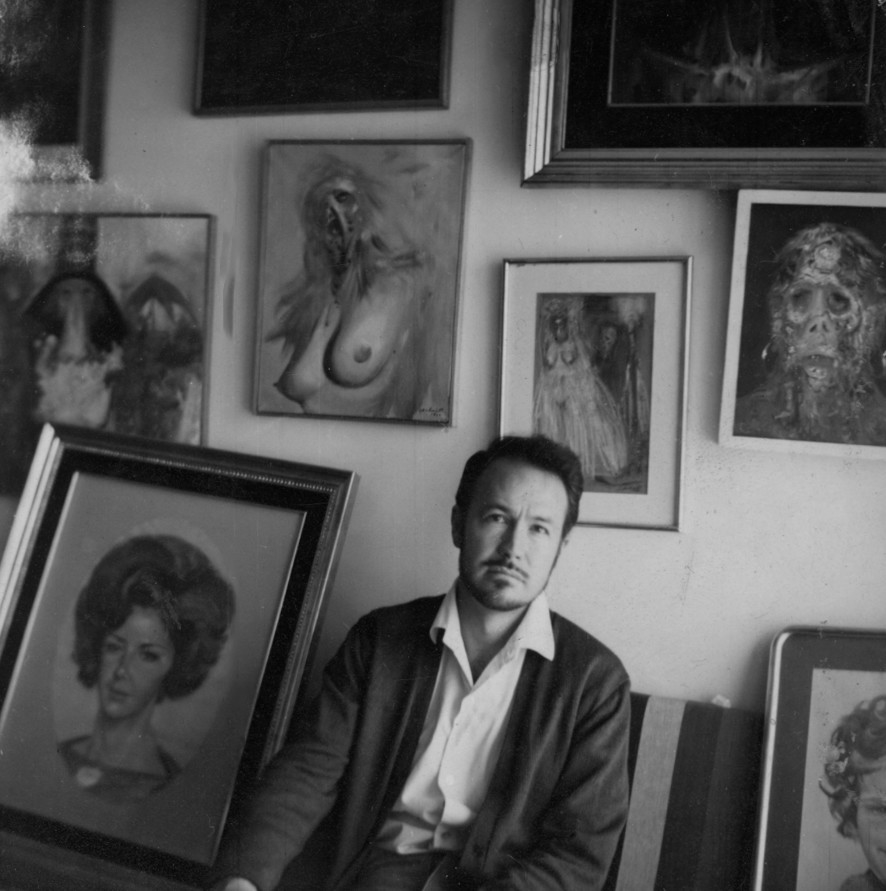
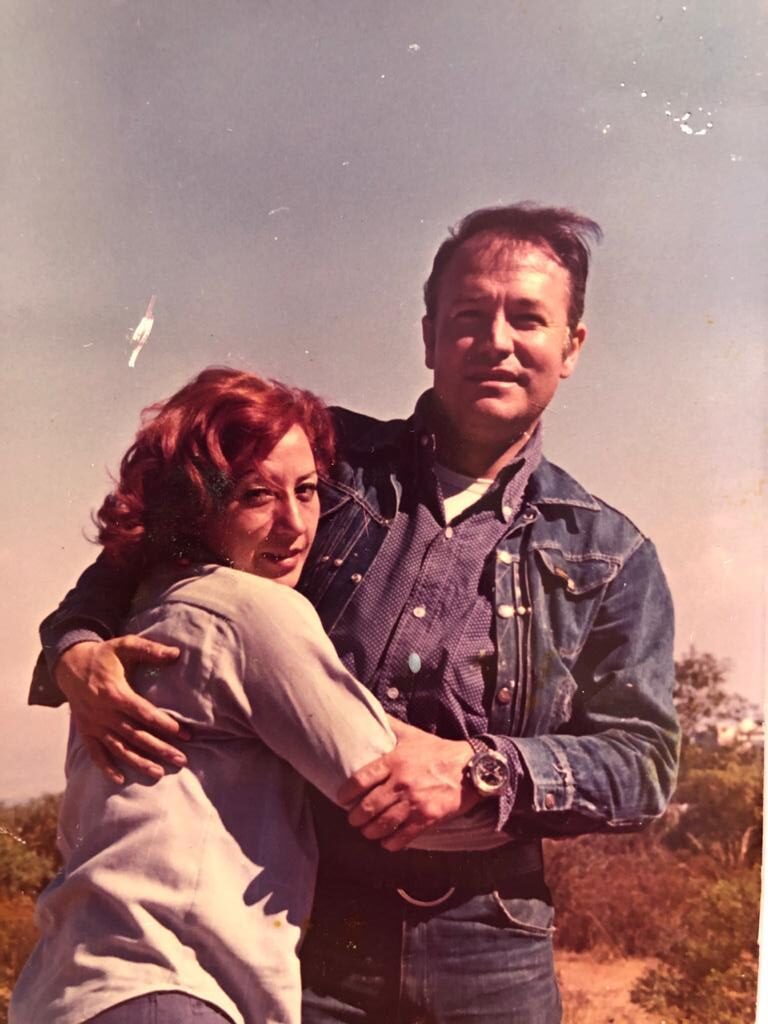
Jose Manuel Schmill enters high school at Colegio Vasco de Quiroga, and by 1952, at the age of 18, he awakens to sexuality and falls in love with his literature teacher, Leticia Herrera, who was 30 years old. She becomes involved with the student and becomes pregnant, so Schmill has no option but to marry at the age of 19, resulting in the birth of Leticia, his first daughter. Thus he is forced to assume the family commitment and dedicates himself to painting more fully and to the sale of his paintings, which he finds very hard and complicated for his young age. However, his great talent helps, and he meets people of Mexico’s cultural environment who begin to notice the genius of his works. The couple’s second son, Vidal, was born 6 years later, but Schmill divorced soon after.
By 1956 he had his first individual exhibition, and by 1960 he was fully involved in the artistic world of the time, frequenting a circle of artists and intellectuals with whom he shared his days in exhibitions, concerts, evenings of conversation and cultural talks. Some of his new friends, Salvador Novo, Rufino Tamayo, Jose Luis Cuevas, Jorge Saldana, Jacobo Zabludovsky, Pita Amor, Luis Filcer, Anguiano, Gutierre Tibon, Juan Jose Arreola, Alfonso de Neuvillate and Leonora Carrington, among others, are those who complement his creative path, with whom he analyzes and enjoys the essences of art and the poetry of life.
In the fortunate year of 1961, the first international exhibitions organized by the plastic arts section of the OAS (Organization of American States) were held in Washington D.C., where he exhibited his work alongside the great painters of Mexico, such as Tamayo, Toledo, Leonora Carrington, Remedios Varo, Juan Soriano, Siqueiros, Orozco and Coronel.
In 1962 he met the one who would be the love of his life and his second wife, now widowed, Sonia Breton Bringas, an attractive and sweet redhead, a young woman sensitive to art and design and daughter of a renowned haute couture designer of the department store El Palacio de Hierro, Carolina Bringas Kennedy, while attending an exhibition of a mutual friend, the painter Luis Filcer, an expressionist painter of Ukrainian Jewish origin, with whom he had a close relationship. He asked her out immediately the next day, and they fell in love after a short time. They married in 1963 and in December 1964 their daughter Sonia was born, who would keep a close and deep relationship with Schmill and would become his manager, representative and responsible for his artistic legacy from 2007 to this day.
In 1963 he attends the Biennale de Paris at the Museum of Modern Art in Paris, and in 1964, Schmill obtains the prestigious Guggenheim Fellowship in New York City, which allows him from that moment on to have greater notoriety and artistic importance at an international level.
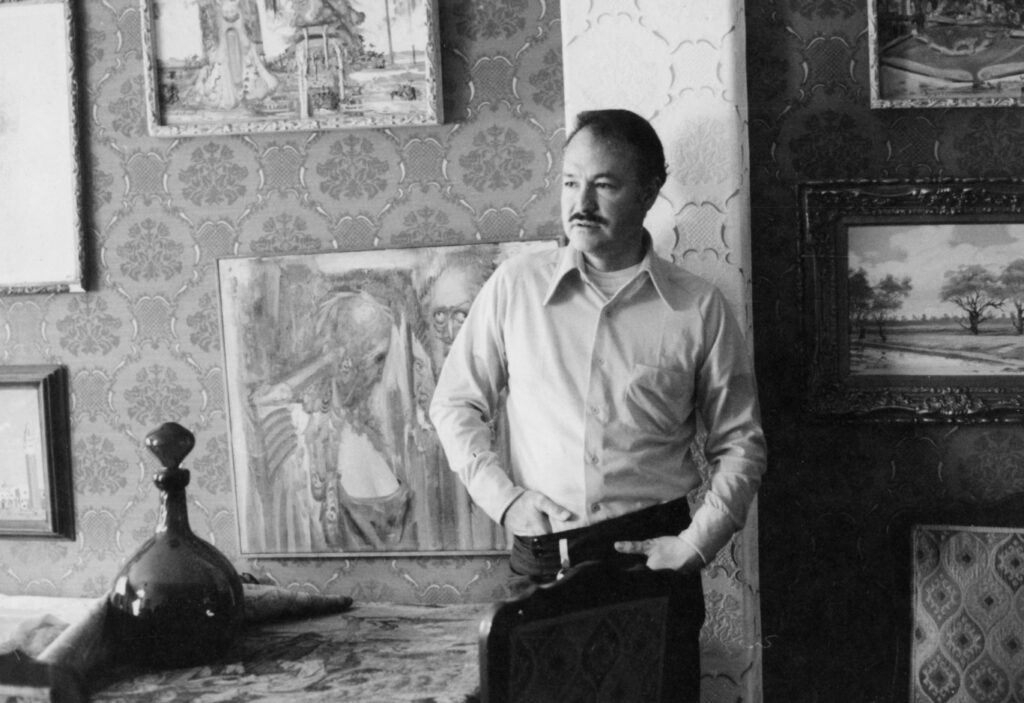
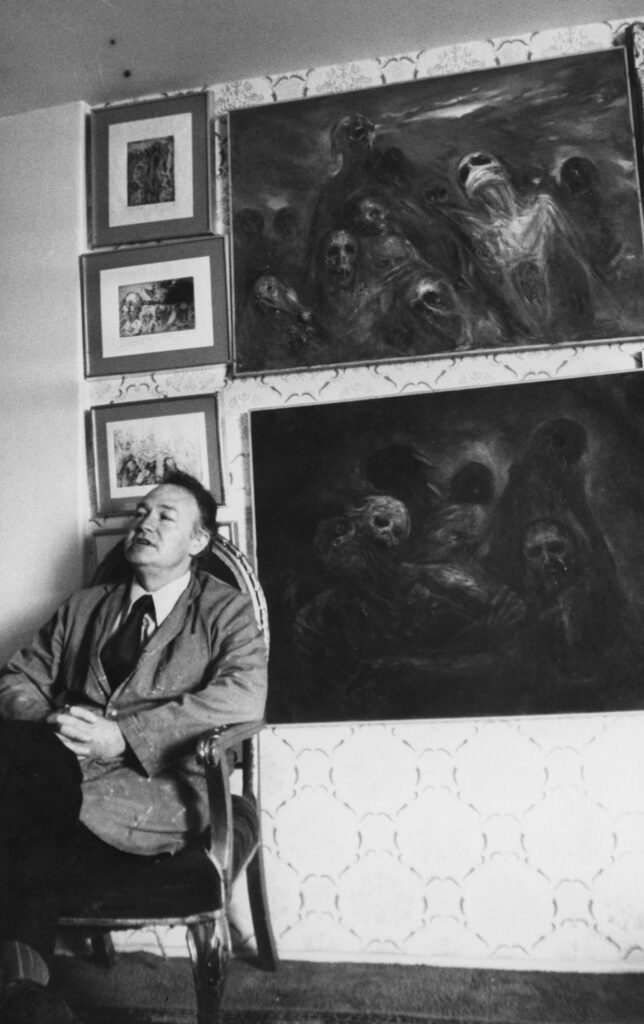
His career continues and he exhibits in various galleries in Mexico and abroad. He achieves much projection especially in New York and holds a successful solo exhibition of prints at the American Association of Artists (AAA) and a solo exhibition at the Wehye Gallery.
Between 1957 and 1969 the book “La Obra Pictorica de Schmill” was published by Editorial Porrua with a prologue by the poet Uwe Frisch, as well as the book “Dibujos de Schmill” by Editorial Ecuador. Several of his illustrations appear in books, both inside them and on the covers, as is the case of: illustration of the book “Facial Defects” by Dr. Mario Gonzalez-Ulloa; illustration and cover of the book “The Portrait of Dorian Gray” by Oscar Wilde; illustration and cover of the book “Crime and Punishment” by Fyodor Dostoevsky; illustration of the book “Equis City” by Fernando Rodriguez and illustration of “Galeria Numero de Malhechores” by Ellery Queen.
Likewise, an important number of national magazines dedicated interviews to him and exhibited his works. The “Hoy” and “Impacto” magazines were the most interested at the time in sending their reporters to interview the controversial Schmill.
Pencil, charcoal, sanguine, watercolor, pastel, acrylic and oil are the techniques in which his feelings are expressed. In April 1970 his exhibition at Galeria Coyoacan was extremely contrasting, presenting beautiful faces and also monstrous portraits of pitiful creatures.
Fatherhood was something especially enjoyed with his daughter Sonia, with whom the time spent together was really an oasis of fun, always within cultural environments, especially on weekends, since on Saturdays they would get breakfast or lunch at the restaurants Schmill frequented, El Aleman, the Danubio, the small cafes with cakes and teas in the Zona Rosa, such as Duca D’Este, where they could not miss the chocolate truffle cake, his favorite.
They walked through the streets of the Centro, Insurgentes and Zona Rosa, visiting art galleries, antique stores, curiosities and above all, they visited music stores to buy acetates, cassettes and cd’s, given the great love for music and the great composers and conductors of classical music that Schmill loved so much, especially the Russians, from which he instilled in Sonia the love for classical ballet. They would also go to the hi-fi stores to look for the best equipment, because when it was time to paint, Schmill loved to listen to the great masters of music at full volume and with excellent definition.
Other times there were frequent meetings with his brother Ulises and personalities of the politics and culture environment of the moment, and they would gather in their homes to enjoy long sessions of music. He also loved to go out to the small towns to paint landscapes, to enjoy the peace of the countryside, the pure air and the wisdom murmured on the lips of the silent skies.
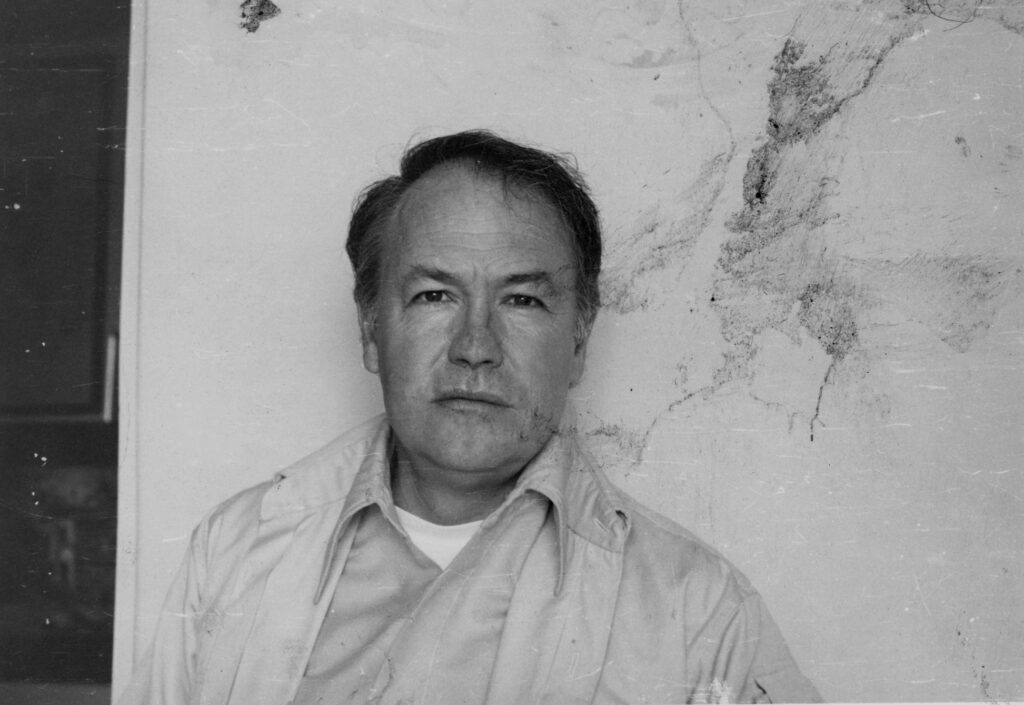
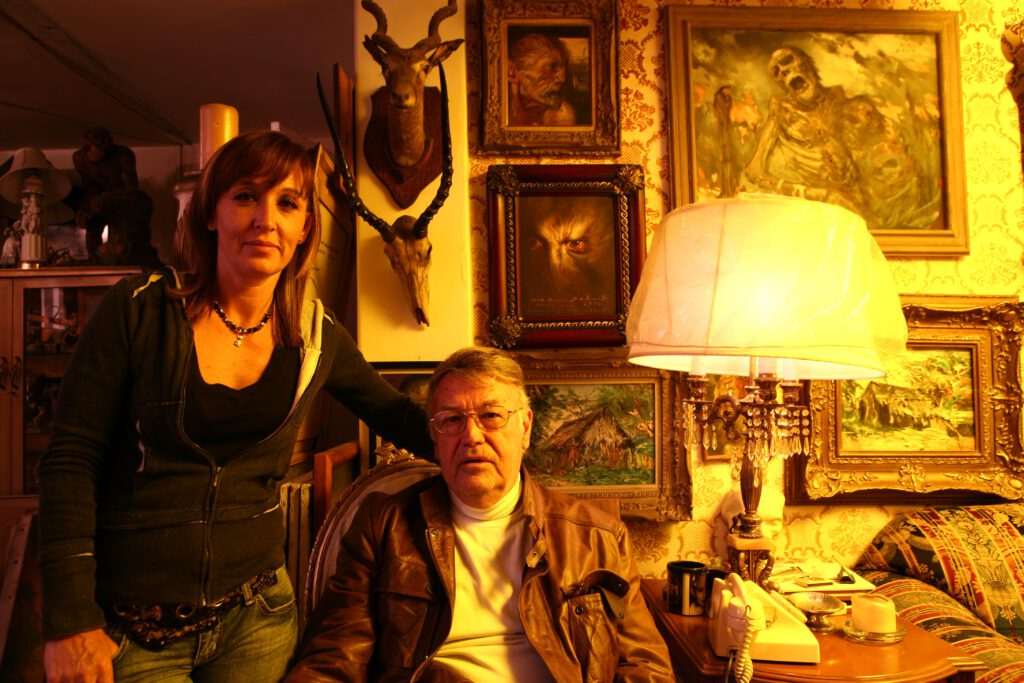
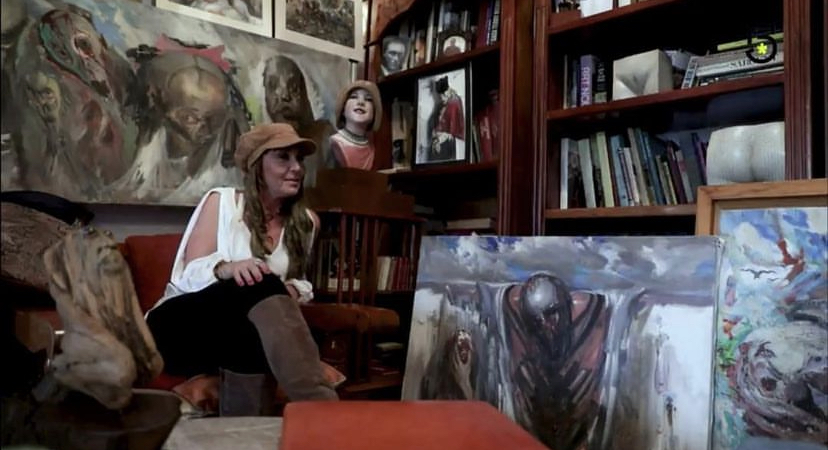
He took Sonia to ballet classes and encouraged her to build with dedication a creative, determined, artistic, practical, and strong personality. He also took her to see horror movies, arthouse films,, exhibitions and fairs where horror had a strong protagonism, and since she was a child he showed her that art is not moral, it is neither good nor bad, it is only a way of expression, which is as unlimited as the creativity of the artist allows it and that no matter the subject, it must always be done with an impeccable technique.
Schmill always enjoyed his children’s company, instilling in them culture, appreciation for art, cinema, literature, and everything related to those subjects. As school was never of his predilection, Schmill was never a demanding father in that aspect, however he always encouraged them to read, learn about the world, history, appreciate the great geniuses, nature, frequent art galleries, and everything that for him was a great learning experience. He was a cheerful and funny father, to a certain extent irresponsible in not demanding much from them, because he could never bear to be given orders himself.
He spoiled them. With moments of great laughter, he was also arrogant before the world, far from abiding, as always, by social rules imposed by society, which he considered ignorant and ridiculous, hypocritical, perverse and exploited, and he tried to make sure that his children also knew how to distinguish this.
By 1972, the prodigy of a solo exhibition at the MOMA in New York allowed him to continue moving forward and evolving steadily, leaving his mark on the souls of the world.
He rarely enjoyed, from time to time, a good red wine, a vermouth, a beer or a whiskey on the rocks, either in meetings or special celebrations, as he never liked vices such as alcohol or other substances or drugs, since beauty, health and sanity were priorities in his life. From 1973 onwards he dedicated himself to the refinement of his technique, to introspection, to perfecting his style, to deepening the unique art that only emerges from the times in which he dialogues with otherness through the revelations that flourish in solitude.
It is in these years that he defines his conceptualization of life, humanity, the activation of spiritual peace in which he defines himself in his own writings as a man who paints monsters not because he has suffered some trauma or suffers in a superhuman way, rather, in his work he captures emotions and states of being and reality that submerge the viewer in deep and perhaps dark reflections, but always human and mainly philosophical, such as decadence, death, abandonment, shame, ridicule, the putrefaction of the spirit represented in putrefied flesh, cruelty, inhumanity, indifference.
It is in these days that he also discovers the other faces of love, pain, relationships, separations, respect for free will and, above all, the apparently imperceptible effects of some traumatic experiences of the past, among which stands out, for example, the suicide of his teacher Jose Antonio Grana.
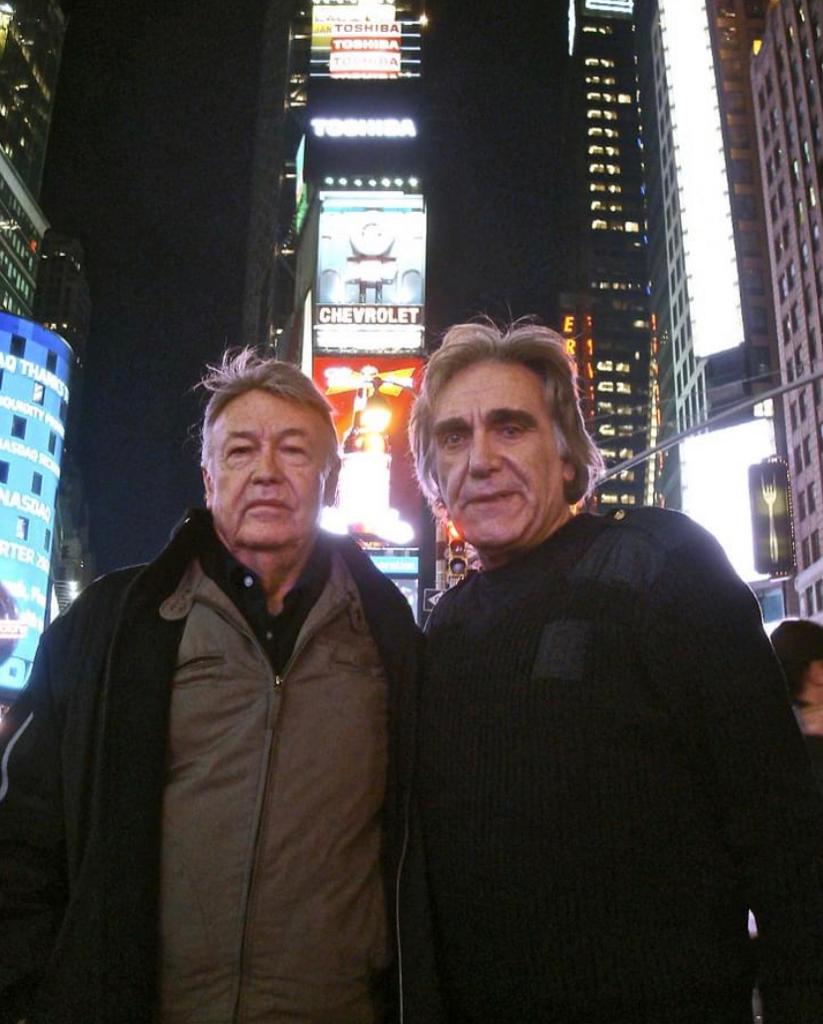
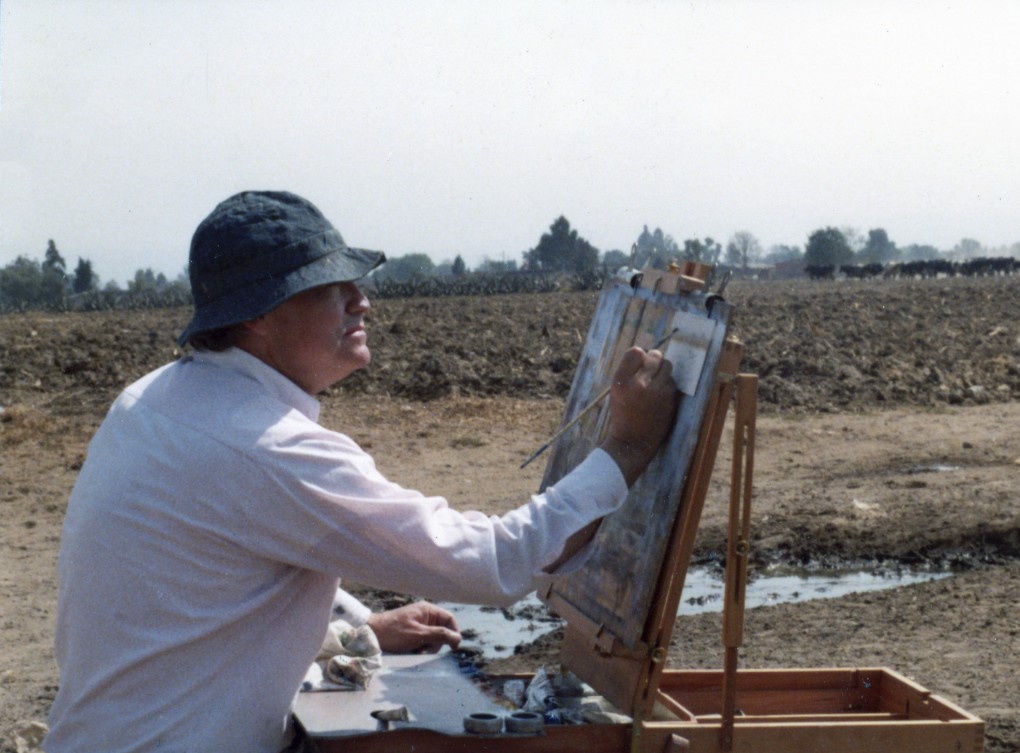
Dedicated to making portraits of important figures of Mexican politics, culture, art and high society, it is thanks to the obsessive observation of facial and character traits, that he manages to master a unique style in which he perfects the stroke, to the extent of achieving the expression of the character’s soul through painting. One of the most endearing examples is the portrait of Christ with the crown of thorns, tears and bright threads of blood dripping to infinity, the look is that of human pain in an eternal silent scream.
By 1976 Schmill consolidates his worldwide reputation as a Mexican and international artist with the success of his solo exhibition in the 4th and 5th halls of the Palace of Fine Arts in Mexico City. He is interviewed on TV, and before the renowned journalist, Jacobo Zabludovsky, he shows himself irreverent, honest, and undiplomatic exposing severe opinions about the behavior of art in Mexico at the time, which in his opinion was full of corruption and lack of refinement, saying that it is folkloric, not classic, that technique did not exist, etc. Such arrogance in that and other interviews in important programs caused him to be invited less and less until he no longer appeared in public life.
Aware and grateful for what it means to be an artist at this moment in the history of a country like Mexico, it is in a newspaper interview with Excelsior in 1977 that he declares that painting has saved him from falling into delinquency or begging.
That his painting does not contain horror, but elements that ridicule the human being and that in his painting he has tried to represent an aesthetic, an attitude, and even when the theme degenerates, he always respects the technique. He affirms that he shows the beauty of monstrosity, the soft and polished ugliness, the luminous ugliness, the pleasant ugliness. Because by channeling his aggression into painting, he manages to free himself from the mire.
In the spring of 1978, in an interview with El Sol de Mexico, he announces that he will return to New York to exhibit his work, since in Mexico the way has not opened up as he expected, and he expresses that he belongs to the neo-humanist current that has returned to a grotesque, fantastic realism, but respecting the technique, since his monsters are inspired by reality, they are as if a nightmare had become a reality.
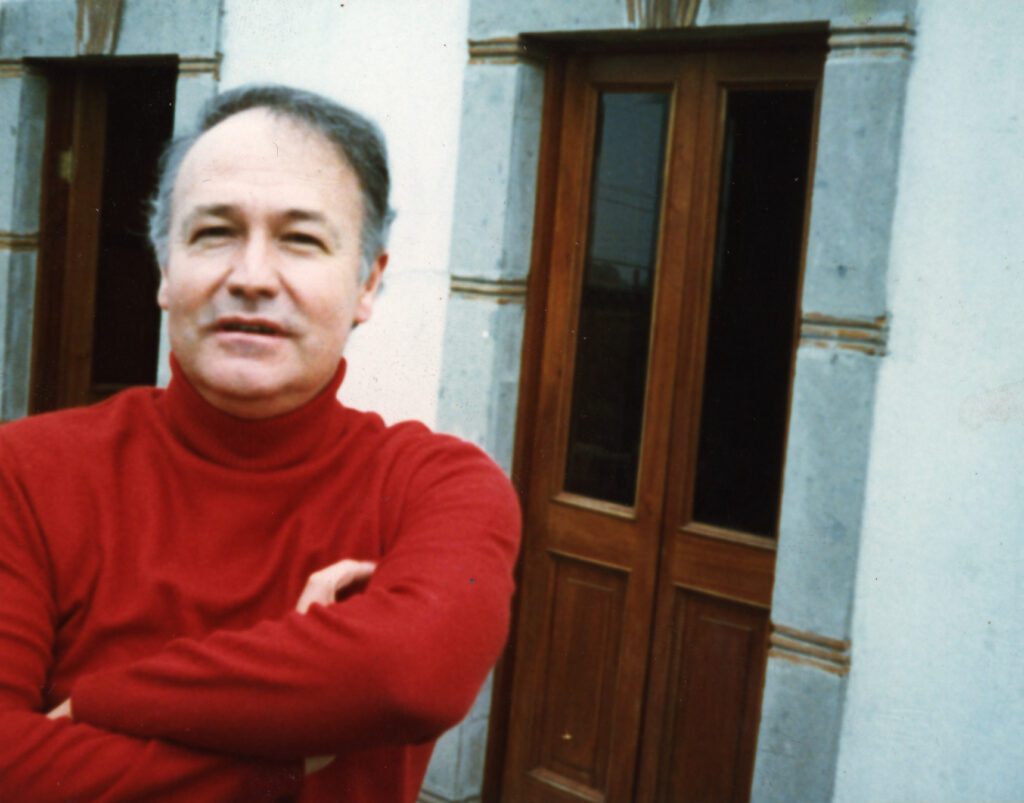
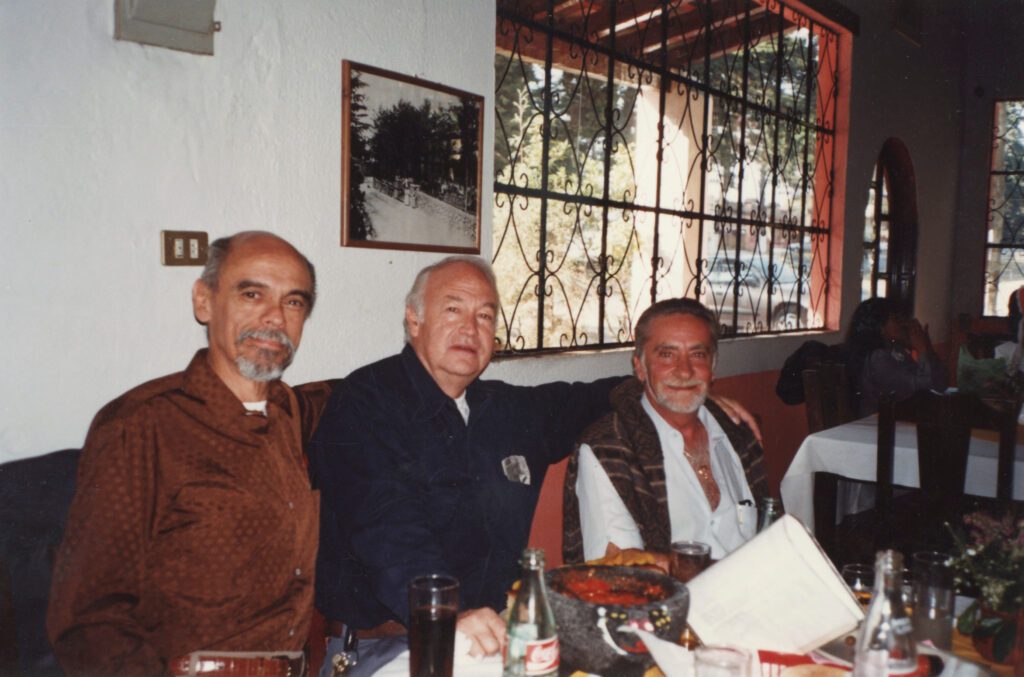
It is in 1981, at the age of 47, at the age of Herman Hesse’s Steppenwolf, that he declares in a journalistic interview with Gabriel Parra, to be secluded in absolute solitude, recognizing that the monster is anyone who has declined from their humanity and becomes something else.
Since then and until 2006, he invests his time in painting, mainly nudes with models in his studio or in the studio of artists who invite him, as well as landscapes in nature, portraits of personalities, always live, and naturally his beloved monsters, constant companions in evolution along with himself and his own path, inspirations conceived by those who have access to the multidimensionality of the imagination, those who have developed an almost superhuman creativity.
He also enjoyed attending meetings of groups of intellectuals, politicians, artists and elite circles where art, gastronomy, philosophy, beauty, irreverence at times, and the avant-garde, as well as culture, classical and contemporary, were the topics that were addressed and that were of interest to him, as well as the occasional dealings with people, regularly attending bohemian evenings that were enriching, where conversations developed around truth, destiny, ethics, creativity, talent, etc. and that could lead him anywhere, to introspection, to revelation, to some collector, to business, to flirtation, or to the inspiration for a new piece.
Perhaps he knew it or perhaps not, but he was preparing for the most spectacular thing in his life, his work was maturing, his character as a painter inhabited his brushes, in each piece the human condition was reflected beyond the skin and reason itself, at this moment and on the planet no other master had created something so powerful in its genre, as heartbreaking as it was moving, a cathartic and indelible work for the soul of the spectator of any time and space.
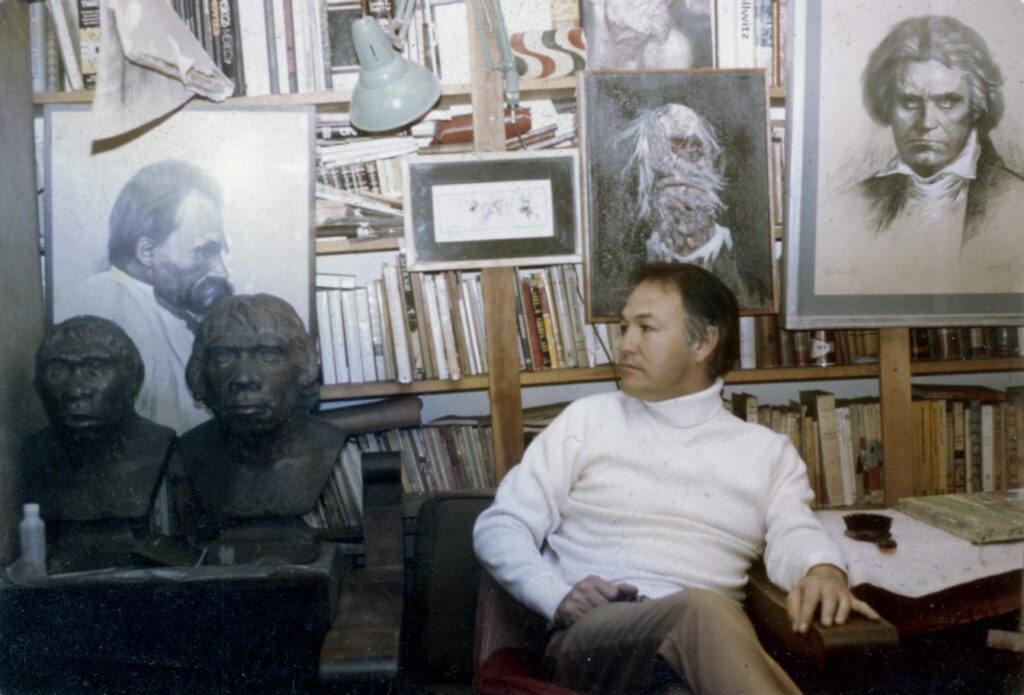
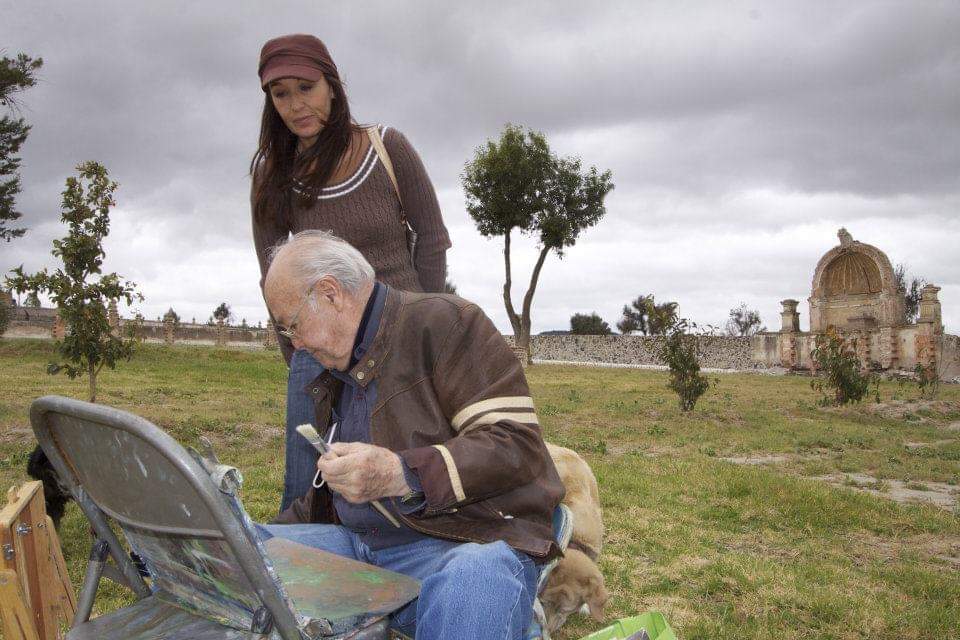
He was becoming an international Mexican artist, communicating through his visual discourse an apocalyptic world, an already doomed reality, a humanity in agony, the mirror of a being without hope, because as we were going through the end of the century and the end of the millennium, the popular beliefs of devastation, uncertainty and fear were predominant. He was portraying the collective unconscious and the spirit of destruction prior to a luminous time of rebirth.
He was nourished by the mystical and phantasmagoric, by horror and horror films, tastes that he also shared and instilled in his daughter Sonia. He also enjoyed thinking, as well as reading, the great classics, comics, eroticism, writing his thoughts, and listening to good classical music, mainly Beethoven, whom he had drawn on several occasions because he really admired him, so he listened to him infinitely. He also delighted in the soundscapes of Aram Khachaturian, Piotr Ilich Tchaikovsky, Dmitri Shostakovich, with the stridencies and darkness of rock’s fiery colors, the psychedelia of the Doors, as well as the poetic acoustics of Barry White, Elvis Presley and Donna Summer, sublime sounds, liquid poetry mixing in the strokes on the canvas, wonderful music and encounters with the creative spirit were always present in his life and, above all, in the intense moments of creation, inspiration and agonizing expression in which he painted all day long, locked up for days and days.
In 2007, his career took off spectacularly thanks to Sonia Schmill, his daughter, who was already his representative and manager at the time, and whose admiration, talent and courage led her to triumph in international territories, because after presenting the work in recognized Mexican galleries and even in Bellas Artes, and discovering the lack of vision, she traveled to the United States to consolidate the publication of a masterful interview accompanied by several works, in Fangoria Magazine of New York. A publication highly recognized internationally for its interest in the diffusion of quality artists inspired by delirious, original and shocking themes.
Thanks to this, in a fortunate connection, Sonia Schmill got Leslie Barany, who also represented H.R. Giger and Marilyn Manson, to represent Master Jose Manuel Schmill, exhibiting his works in Last Right Gallery, N.Y., Fuse Gallery, N.Y. and The Damned Show in Detroit. Later on, she positioned him in Mexico and in Leipzig, Germany.

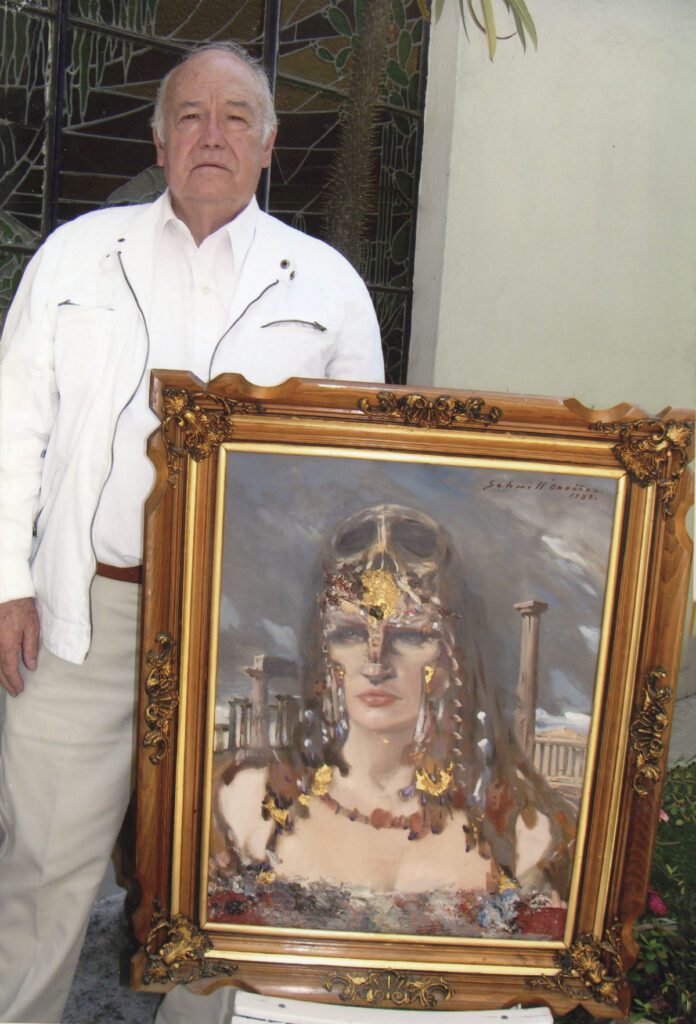
By 2009, in Mexico, he participates with plastic work in the Proculta Exhibition in charge of Ernestina Sodi.
Between 1980 and 2018 he held very successful exhibitions, among which: 5 Year Anniversary Last Rites Gallery in New York; Tangent Gallery also in New York; Museum HR Giger in Switzerland ; Horror and Fantasy film Festival San Sebastian, Spain; Atelier Art-Ig Solingen, Germany; Copro Gallery in Santa Monica, USA.
During these years and until 2018, by recommendation of his brother Ulises Schmill, he also painted portraits of ministers of the Supreme Court of Justice of the Nation, oil paintings of extraordinary fineness that can be seen in the permanent exhibition hall.
In 2018, in Mexico, he passed away due to cancer in a peaceful way, in the arms of his beloved granddaughter Michelle.
In 2019, in Los Angeles, two exhibitions of his work were held as posthumous tributes, one at The Sanctuary Fashion Show Art and Music in March, and the other one at the Copro Gallery in October.
His admiration for beauty, the purity of technique in the execution of art whose excellence is achieved by giving his life in each act, make him enjoy and love art that provokes a strong connection with the truth, life, the universe, the being itself, finding among his artistic preferences masters who were powerful inspirations, as well as undeniable influences along his path, being Schmill’s favorite painters: John Singer, Sargent, Francis Bacon, Francisco de Goya, Amedeo Modigliani, Anders Zorn, Käthe Kollwitz, Van Gogh, Diego Velázquez, Joaquín Sorolla, Salvador Dalí, Augustus John, Chaim Soutine, Antoni Tapies, Alma-Tadema, James Ensor, George Wesley Bellows, Edvard Munch and Pablo Picasso.
Schmill’s favorite writers were: Schopenhauer, Edgar Alan Poe, Oscar Wilde, Tolstoy, Shakespeare, Friedrich Nietzsche, Charles Baudelaire, Sigmund Freud, Albert Camus y Giles de Rais.
